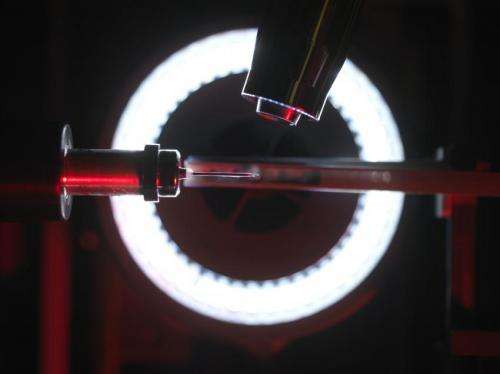Team discovers Achilles' heel in antibiotic-resistant bacteria

Scientists at the University of East Anglia have made a breakthrough in the race to solve antibiotic resistance.
New research published today in the journal Nature reveals an Achilles' heel in the defensive barrier which surrounds drug-resistant bacterial cells.
The findings pave the way for a new wave of drugs that kill superbugs by bringing down their defensive walls rather than attacking the bacteria itself. It means that in future, bacteria may not develop drug-resistance at all.
The discovery doesn't come a moment too soon. The World Health Organization has warned that antibiotic-resistance in bacteria is spreading globally, causing severe consequences. And even common infections which have been treatable for decades can once again kill.
Researchers investigated a class of bacteria called 'Gram-negative bacteria' which is particularly resistant to antibiotics because of its cells' impermeable lipid-based outer membrane.
This outer membrane acts as a defensive barrier against attacks from the human immune system and antibiotic drugs. It allows the pathogenic bacteria to survive, but removing this barrier causes the bacteria to become more vulnerable and die.
Until now little has been known about exactly how the defensive barrier is built. The new findings reveal how bacterial cells transport the barrier building blocks (called lipopolysaccharides) to the outer surface.
Group leader Prof Changjiang Dong, from UEA's Norwich Medical School, said: "We have identified the path and gate used by the bacteria to transport the barrier building blocks to the outer surface. Importantly, we have demonstrated that the bacteria would die if the gate is locked."
"This is really important because drug-resistant bacteria is a global health problem. Many current antibiotics are becoming useless, causing hundreds of thousands of deaths each year.
"The number of super-bugs are increasing at an unexpected rate. This research provides the platform for urgently-needed new generation drugs."
Lead author PhD student Haohao Dong said: "The really exciting thing about this research is that new drugs will specifically target the protective barrier around the bacteria, rather than the bacteria itself.
"Because new drugs will not need to enter the bacteria itself, we hope that the bacteria will not be able to develop drug resistance in future."
More information: 'Structural basis for outer membrane lipopolysaccharide insertion' is published in the journal Nature on June 18, 2014. DOI: 10.1038/nature13464
Journal information: Nature
Provided by University of East Anglia




















